TV series Defying Gravity follows the lives of eight astronauts on board international spacecraft Antares as they travel the solar system in the year 2052. The show, which unfortunately looks set to be discontinued, features hundreds of visual effects shots from Stargate Studios. Pitched as a Grey’s Anatomy in Space, fxguide talks to visual effects supervisor Sam Nicholson about the show’s extremely impressive visual effects.
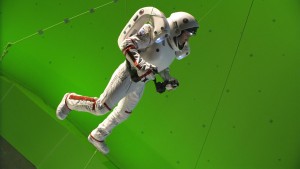
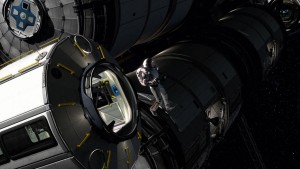
Defying Gravity moves between a deep space, long-term six year exploration aboard the Antares and flashbacks to the team preparing for the mission. To add to the complexity of the story there is some alien intelligence at work on board the ship. Between the real and imagined space environments, Stargate Digital produced a large variety of very realistic shots and space environments along with the odd naked floating astronaut shot!
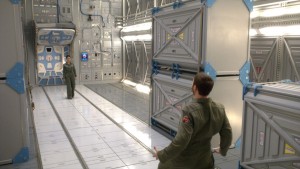
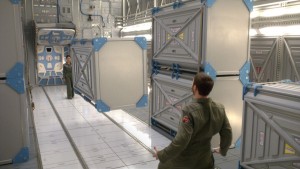
fxg: Can you tell me about the premise behind the show and what that meant for your visual effects work?
Nicholson: Defying Gravity was a unique challenge in that it’s ‘reality space,’ if you will. We did some research at NASA and then tried to mimic what a real spaceship in the future would be like. It’s not a particularly fanciful show – everything has to have some justification to it and be photoreal. It took a team of about 15 people working in Maya about 6 months just to model the ship.
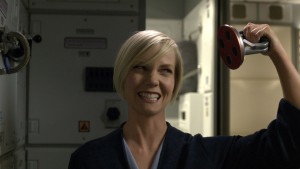
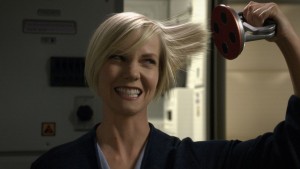
fxg: What was involved in designing and building the Antares?
Nicholson: The design was actually based on a ship built for Voyage to the Planets, a BBC production, that Defying Gravity is somewhat modeled after. We designed the ship to be a much bigger version of the International Space Station. It’s modular, so has a number of components that would have been trucked up to space over several years. There was a lot of back and forth with NASA during the design phase. Also, there are so many types of effects shots in the show, not just of the ship or planets. A lot of stuff we did is on board the ship augmenting things, adding props or blood and other effects.
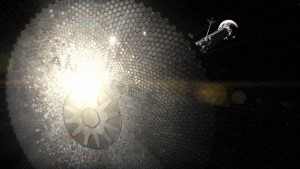
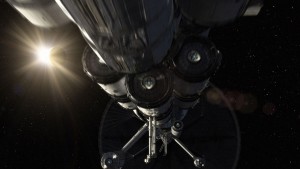
fxg: What would a typical spacecraft shot involve?
Nicholson: We’d previs the shot for approval in Maya or Lightwave. Sometimes we used Sketch-Up to design the environments. Generally, we had a live action greenscreen element of someone shot on wires in a spacesuit. Then you have the ship model which we would animate to be in the right position. The starfields are generally matte paintings.
So there’s a live action element in the foreground, a 3D element in the mid-ground and a 2D element in the background, for a simple shot. Then you have all the layers of animation – the lights have to blink on the ship and the thrusters have to work, the reflections in the astronaut’s visors. All the visors were computer generated so we could see what they’re seeing.
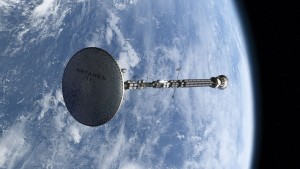
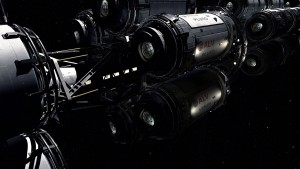
fxg: What kind of pipeline did you use to complete your shots?
Nicholson: We use After Effects throughout the facility for compositing. Most of the work in Defying Gravity was accomplished in Vancouver. But we have a simultaneous rendering system set up so that shots can be rendered in Canada and Los Angeles together.
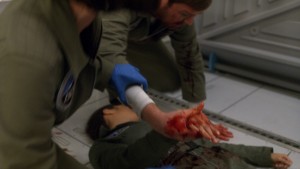
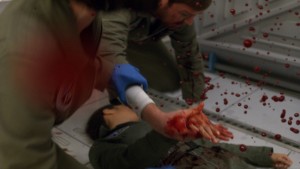
fxg: Is there a particular planet shot you could take me through?
Nicholson: At one point they go to Venus. We decided to shoot the atmosphere of Venus using liquid nitrogen as a photographic element. So we got 50 gallons of liquid nitro and a high speed camera that we could shoot at 2000 frames per second. Then we did big pours of the nitrogen into a tank on our stage, shot the sky and then stretched it to make it fit. So essentially the 2000 frames per second plate is what the sky is on Venus. The matte paintings are derived out of photographic textures from the Galapagos Islands, mostly volcanoes and unusual rock formations.
The set was only about 20 feet deep with some rocks and textures, but the majority of it is greenscreen. All the ships – the landers – were computer generated. So a lot of these shots included visual effects photography rather than having everything computer generated. Then matte paintings were done in Photoshop, 3D ships were done in Maya with everything blended together in After Effects. We like to try and put as many different techniques into a shot as we can so that it doesn’t look too sterile. If you computer-generate clouds they can be too predictable. But if you use a liquid nitrogen tank you have no idea what that thing is going to do! You get some nice imperfections that I feel make the finished shot look better. You just have to design it in a way that you get a lot of happy accidents.
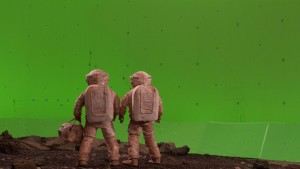
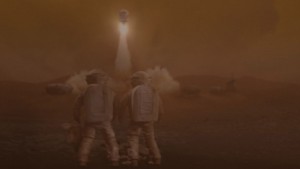
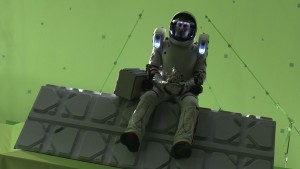
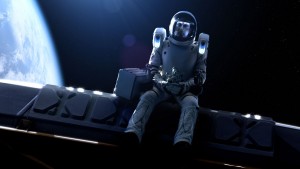
fxg: I guess that all grounds it in reality a lot more.
Nicholson: Yeah, it was pitched as Grey’s Anatomy in space. It’s supposed to show space very comfortably, just as a setting, like a grocery store.
fxg: Stargate Studios does quite of a lot of episodic television vfx. What were some of the challenges of Defying Gravity in particular?
Nicholson: We generally only have two weeks to turn around a show with say 150 shots, but on Defying Gravity we had a little more time. It can be quite complicated, with rendering out with motion blur and layering everything together. Here we had a reality template. A lot of the design issues were already defined for us, which saved some time.
We used F35s to shoot the show, which I think is the best full-chip digital camera out there. If you’re wrestling with bad keys and weak video with less colour depth, you really do stack the odds against yourself. So we try and shoot things that lets us do the visual effects on a creative level as opposed to trying to ‘fix’ things. This is particularly the case with a greenscreen show like Defying Gravity, which is hard for the actors when they can’t see things around them. The less physical objects you have for the actor to work from, the more difficult it gets in terms of continuity and the look of the shots in the context of the whole sequence. As they say, you’re only as good as your worst shot in a show.
We had a supervisor and a producer on set every day, in every production and creative meeting, and if you do that you tend to nail down a lot of the difficult scenes in pre-pro. Which means you can just fill in the blanks on the day. It’s that old adage: plan the shoot and shoot the plan.
